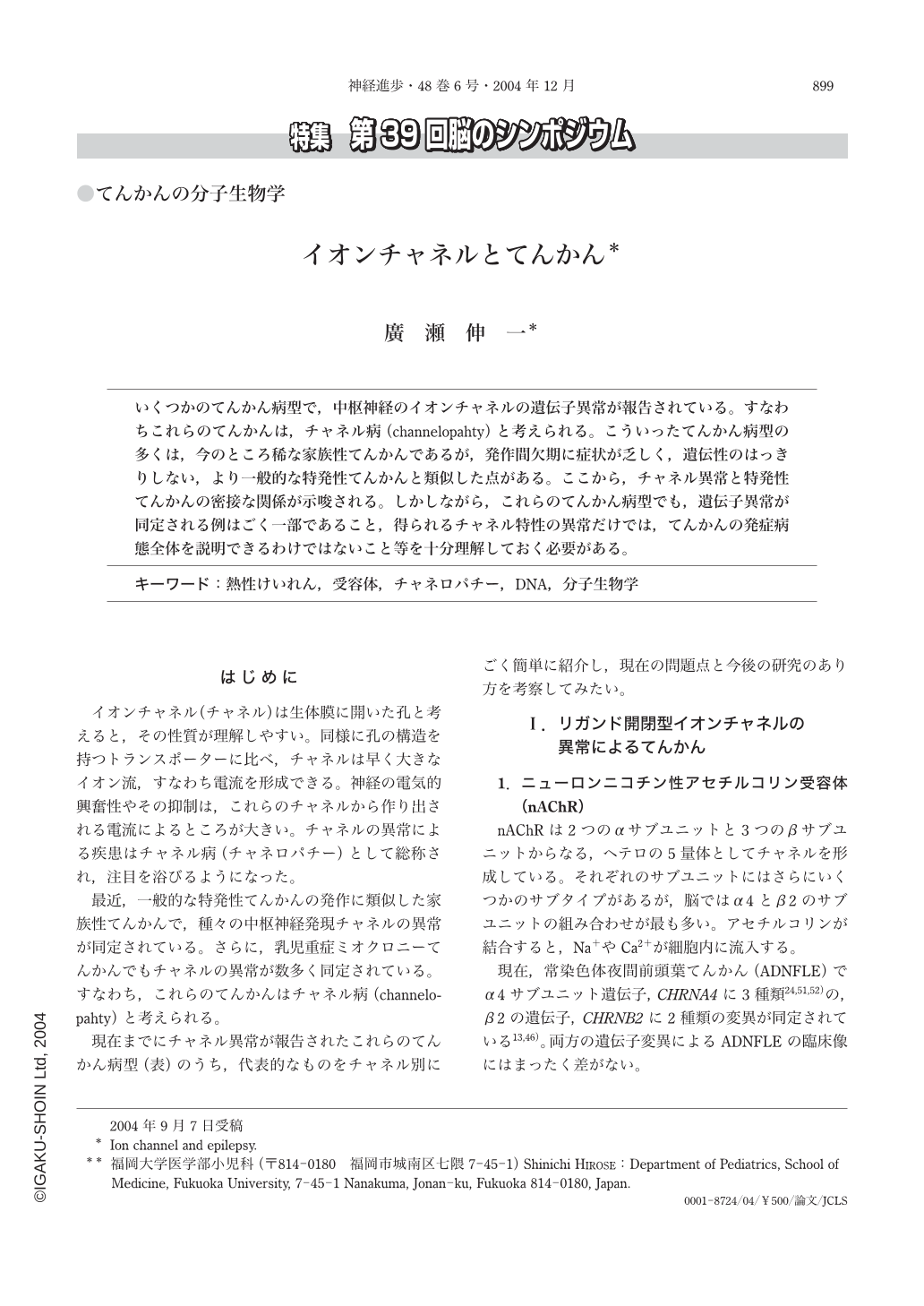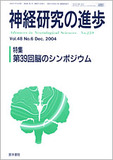Japanese
English
- 有料閲覧
- Abstract 文献概要
- 1ページ目 Look Inside
いくつかのてんかん病型で,中枢神経のイオンチャネルの遺伝子異常が報告されている。すなわちこれらのてんかんは,チャネル病(channelopahty)と考えられる。こういったてんかん病型の多くは,今のところ稀な家族性てんかんであるが,発作間欠期に症状が乏しく,遺伝性のはっきりしない,より一般的な特発性てんかんと類似した点がある。ここから,チャネル異常と特発性てんかんの密接な関係が示唆される。しかしながら,これらのてんかん病型でも,遺伝子異常が同定される例はごく一部であること,得られるチャネル特性の異常だけでは,てんかんの発症病態全体を説明できるわけではないこと等を十分理解しておく必要がある。
Recently, genetic causes have been identified in certain epilepsy syndromes in which the phenotypes are similar to common idiopathic epilepsies. Interestingly, almost all such genetic abnormalities were detected in genes encoding ion channels expressed in the brain. Thus such epilepsy syndromes are disorders of ion channels, i. e., “channelopathies”. The list of ion channel abnormalities that are associated with childhood epilepsy is expanding and includes the followings. Mutations of the genes encoding two subunits of the neuronal nicotinic acetylcholine receptor, a ligand-gated ion channel, were found in autosomal dominant nocturnal frontal lobe epilepsy. Mutations of two KCNQ K+-channel genes were identified in benign familial neonatal convulsions. Mutations of a Cl-channel gene, CLCN2 have been recently found to be associated with generalized epilepsy. Mutations of the genes encoding several subunits of the voltage-gated Na+-channel and GABAA receptor, a ligand-gated ion channel, were also identified as underlying causes of various epilepsy syndromes, such as autosomal dominant epilepsy with febrile seizures plus or generalized epilepsy with febrile seizures plus, benign familial neonatal infantile seizures and autosomal dominant juvenile myoclonic epilepsy. Mutations within the same gene can result in different epilepsy phenotypes. Abnormalities of Na+-channelα1 subunit were also associated with severe myoclonic epilepsy in infancy. Some forms of juvenile myoclonic epilepsy, idiopathic generalized epilepsy and absence epilepsy can result from mutations of some Ca2+ -channels. Epilepsy syndromes mentioned above, except for severe myoclonic epilepsy in infancy, were familial epilepsy syndromes showing dominant inheritance with high penetrance while common idiopathic epilepsies do not show obvious inheritance. However, the similarities in symptomatology between such familial epilepsies and common idiopathic epilepsy may provide us with clues to the genetics of common idiopathic epilepsies.

Copyright © 2004, Igaku-Shoin Ltd. All rights reserved.


